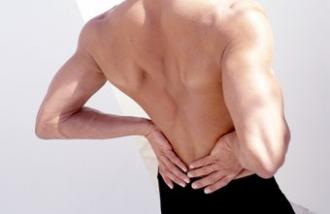News Taffy
| Post Your News Send Us An Event Start A Gallery |  |
| Most Recent | Most Popular | Top Contributors | Galleries | Events |
 | Contributor: admin subscribe to my stories |
 The Cardiologist's Wife - Tips on Dealing with Strained Muscles This week finds me trying to figure out how to do things while lying flat of my back, the most comfortable position for me to be in right now. It seems I’ve pulled a muscle in my back while trying to pull on my pants Saturday morning. I guess I should have made up a more interesting story about how this happened but I don’t have that much energy. The pain isn’t that bad but it has become my constant companion and is very annoying. Sitting is the most uncomfortable, lying down the best option. I got to thinking, “what exactly happens when you pull a muscle?” Humans have three different types of muscles - cardiac, skeletal and visceral. Skeletal muscles are the ones we can control and thus occasionally injure. Our muscles are made of millions of muscle fibers which are tightly bunched together and wrapped in a sheath of connective tissue. Pulling or straining a muscle refers to an actual rip or tear of some of the muscle fibers. (Ick.) Some muscle strains are worse than others. A mild strain happens when you tear about 5 percent of the muscle fibers in a particular muscle and results in some discomfort for a few days while a full rupture severs the muscle and requires surgery. Thank goodness a full rupture is pretty rare! A muscle strain occurs when the muscle is overstretched and may be caused by fatigue, not warming up, poor flexibility, poor conditioning, overuse or moving the muscle in a way it isn’t designed to move. You probably are familiar with the symptoms of a muscle strain but here they are just in case. sudden onset of pain Most of the time you can just treat a muscle strain at home with rest, ice, compression and elevation (RICE). Rest and void activities which cause pain for a couple of days, then try to slowly use the affected muscle, taking care not to overdo it. This keeps the blood flowing in the area and helps speed up the healing process. Apply ice immediately after injuring your muscle to minimize swelling. Keep the ice pack in place for about 20 minutes at a time, repeating every hour the first day. You can apply ice every four hours over the next couple of days as necessary. Wrap the muscle with an elastic bandage to prevent swelling, being careful not to wrap too tightly. Obviously this won’t be practical in some circumstances. Elevate the area if possible to reduce swelling. Use an anti-inflammatory medicine like Advil for pain and swelling. Tylenol may also help with pain. After 3 days, apply heat to the area to promote blood circulation and healing. See a doctor if you have severe pain or difficulty moving the injured area or it doesn’t get better within a week or so. You can decrease your chances of straining a muscle by maintaining a regular exercise routine that includes stretching and warming up before engaging in strenuous work or exercise. However, some accidents can’t be avoided. Who knew you need to warm up before putting on your pants? I will definitely be more careful next time! [+] add comment |














